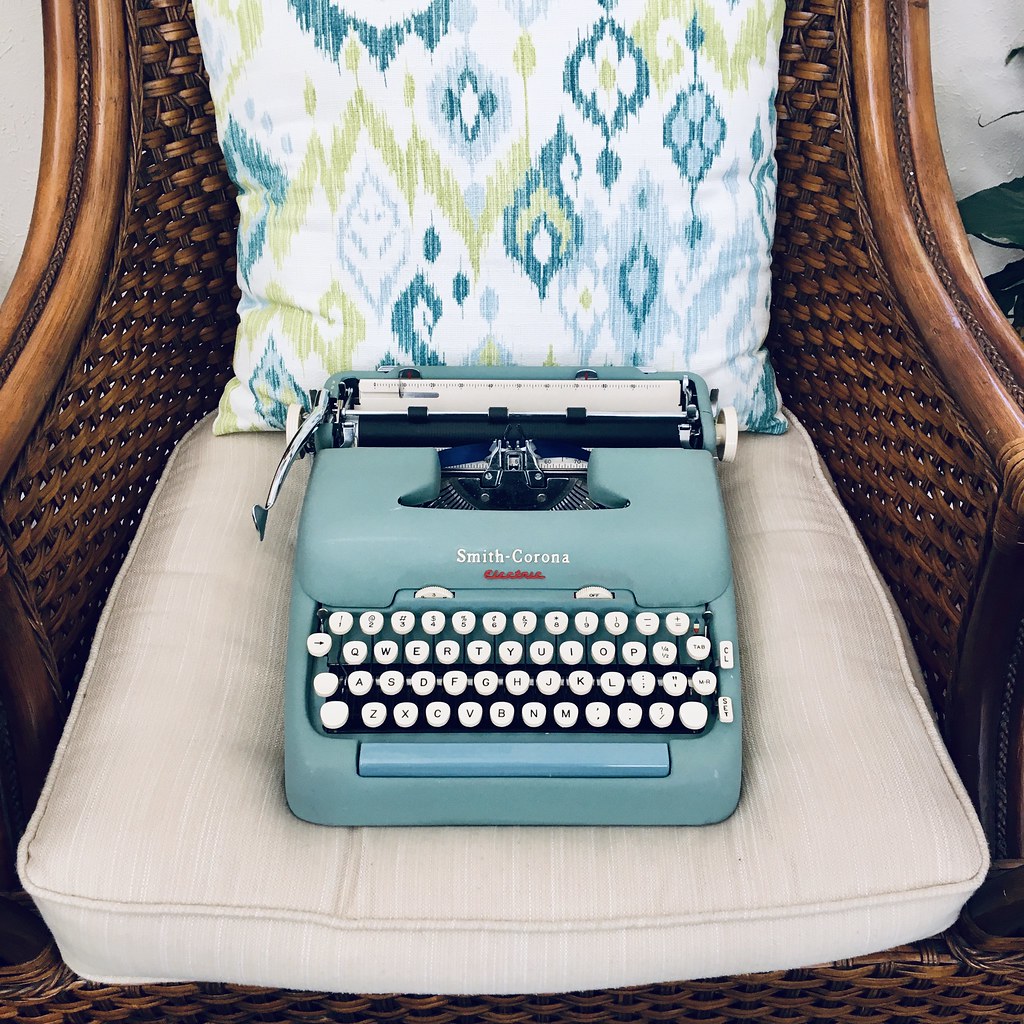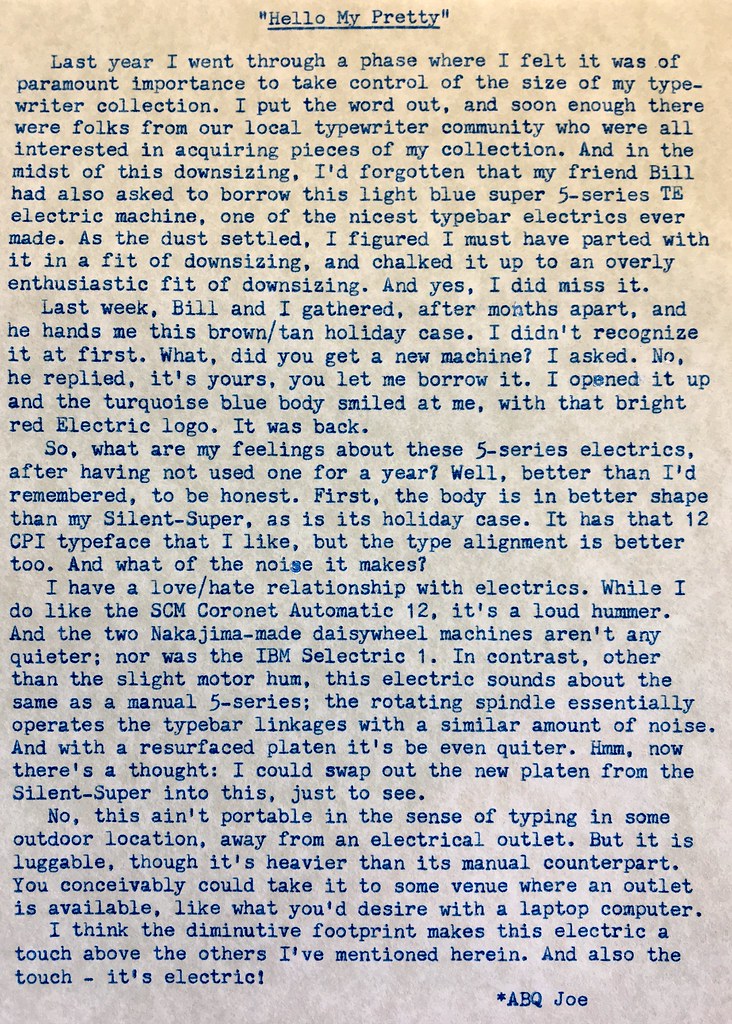Hello My Pretty


Though it's not as loud as other electric/electronic typers I've used, the typebars do hit the platen with force, as if you were typing on a manual 5-series with a heavy hand. And the shifting is spindle-activated: as you press the shift key a small amount, the spindle engages to lower the segment with authority. This machine doesn't mimic the action of some nimble-fingered dillentante. But the payback you get is a dark, even imprint, and a wonderful touch, as you'd expect from an electric typebar machine.

The keyboard layout on this machine is nice. It has the number 1, unlike the earlier 5-series machines, but the thing I like most is that the apostrophe is lower case, and to the right of the semicolon, just like it is on a modern computer keyboard. I've said this before, but that's the one thing I miss on manual machines, the apostrophe position. I've wondered why manufacturers kept manual keyboard layouts like that, even into the 1970s and later, when their electric/electronic counterparts had the more modern layout. Perhaps it had as much to do with tradition as anything else? Older typing instruction manuals, written for the manual era, did teach the apostrophe as a shifted 8. But, that can't be the only reason.
If I were a writer in the mid-20th century, I would have been tempted to get one of these electrics as soon as I could, if cost were no object, and lack of portability a non-issue. Perhaps for secretarial use the apostrophe was little-used in formal business correspondence, hence its position on a manual machine as a shifted-8 might be less of an issue; but for the fiction writer or playwrite, who might work with lengthy dialog scenes, contractions and their requisite apostrophes are the normal way realistic characters talk. Having the apostrophe in its modern location would be a boon to such a writer.
All of the electric/electronic machines I mentioned earlier I've been cautious about using late at night, while the rest of the family is asleep. This one I expect to be less of a problem with noise. Perhaps I would move it to the patio room at the back of the house, away from the bedrooms, just like I would with a manual typer. I say this in the hopes that I will give it more use, now that it's back in my hands.
Before I loaned it to Bill, I'd not given it much attention. I certainly under-appreciated its finer merits; but just the other day my oldest brother came over to get a new ribbon put into his Remington Quiet-Riter, and I offered to let him try one of the Nakajima daisywheel machines. He declined my offer, but just in the process of testing it I simultaneously envied its clean imprint while lamenting the loud clank of the daisywheel print solenoid, along with the machine's large footprint. I'd kept that machine on one corner of my office desk for months, and all it served as was a place to stack papers. Never once did I use it. But that taste of electrified keys, with its featherweight touch, is what I like about this blue beauty. And, it's quieter and smaller than the daisywheel machine.
Last year I replaced one of the drive belts due to breakage. I used a new-old-stock orange silicone VCR belt I found in my parts bins. Probably won't last as long as the original, but I do think someone is selling replacements online, somewhere. Perhaps I should do some looking and get a spare for both belts.
Now that I've had time to cogitate on electric/electronic typers, their size and noise is what I most object to. Having to drag an extension cord out to the patio is less of a problem. Perhaps this blue beauty will get more winter use, as I expect to do less outdoor typing. Regardless, I'm glad to have it back in the stable.

4 Comments:
Nakajima E.T.s are louder than most, especially the earlier AE series. :)
This was the typewriter I used to write my college papers; it was handed down to me by my mother, who had used it in grad school. It's somewhat astonishing to me that you describe yours as a relatively quiet machine. My instance of the same model literally provoked complaints from the neighbors, and every letter struck the page like a miniature lightning strike. Still, I recently came across one of those college papers of mine, and I was impressed by the clarity, cleanness and uniformity of the type.
I admire the looks of that - it doesn't look modern! And a lovely colour.
I've had two of these - a white one in script named the Iron Lady, and a green '58 one in elite. Gave 'em both to Bill W. in a fit of releasing the electrics in my collection. I feel like I should regret that, since I really liked both of them. /:
Post a Comment
<< Home